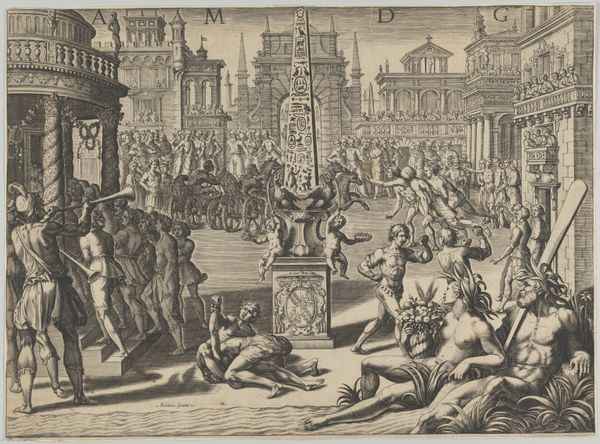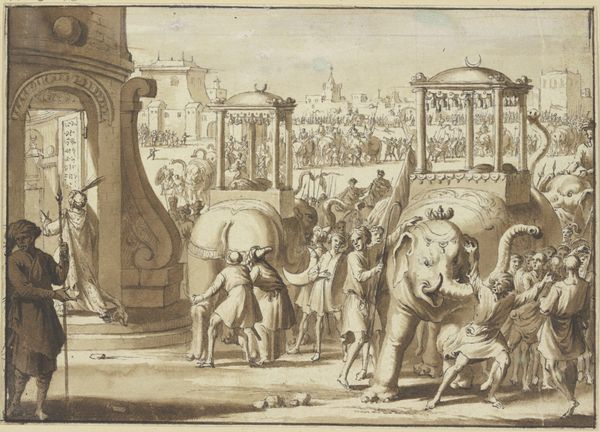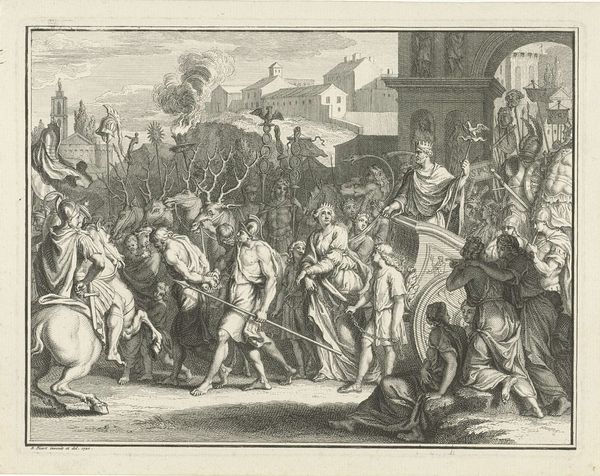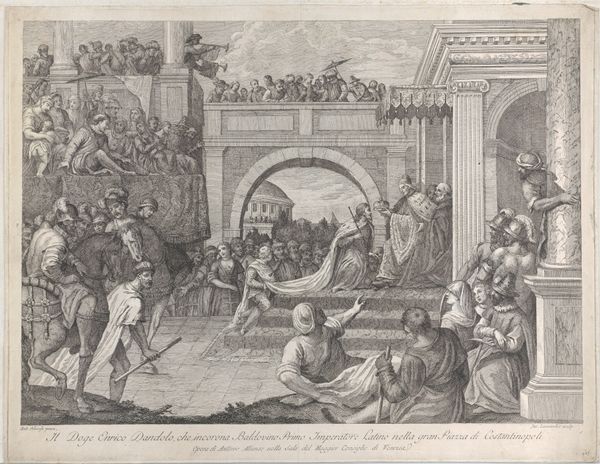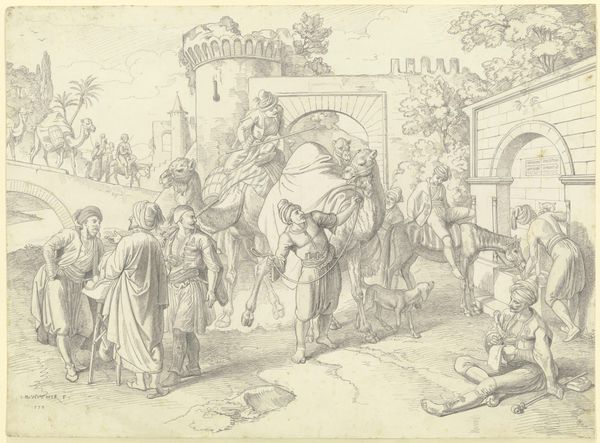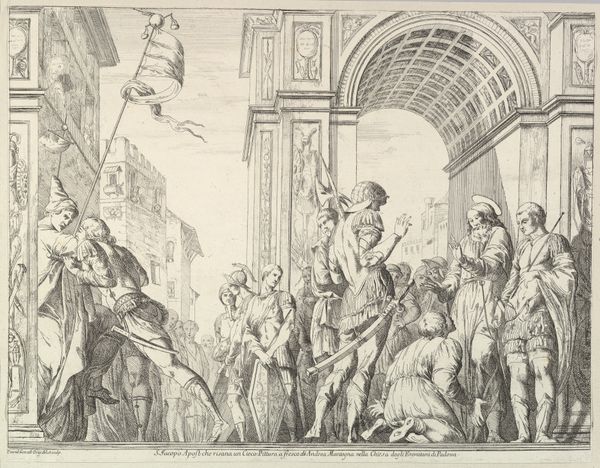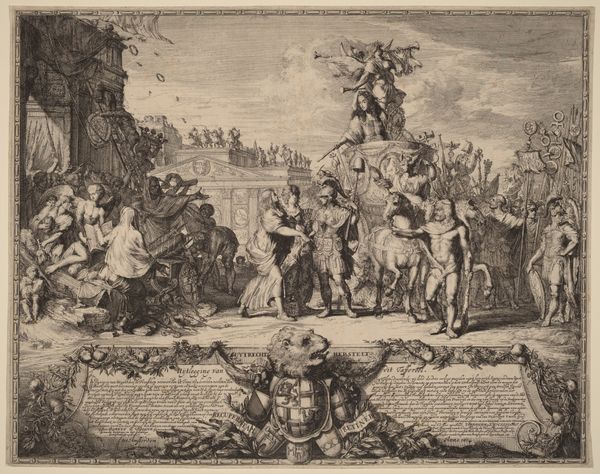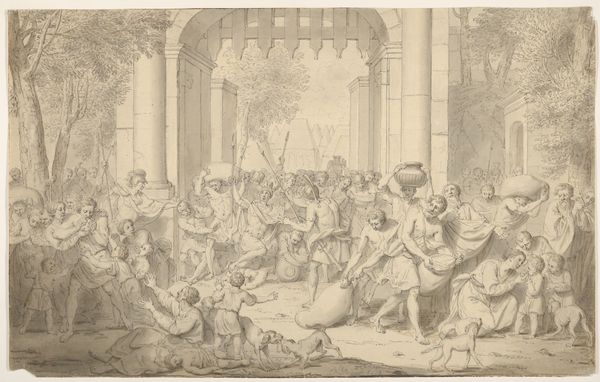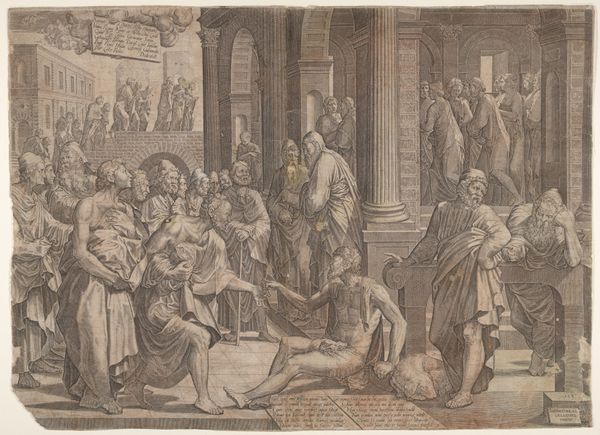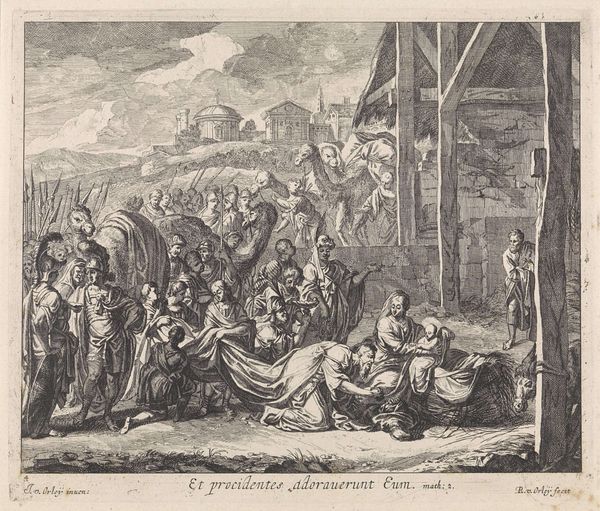
drawing, ink, pencil
#
drawing
#
toned paper
#
light pencil work
#
narrative-art
#
baroque
#
pen sketch
#
pencil sketch
#
sketch book
#
figuration
#
personal sketchbook
#
ink
#
pen-ink sketch
#
pencil
#
sketchbook drawing
#
pencil work
#
history-painting
#
sketchbook art
Dimensions: overall: 17.4 x 23.3 cm (6 7/8 x 9 3/16 in.)
Copyright: National Gallery of Art: CC0 1.0
François Boitard created this pen and gray ink wash drawing titled "The Arrival of Aesculapius in Rome" sometime between 1685 and 1715. Boitard lived during a period of significant social change in France, marked by the reign of Louis XIV and the rise of absolutism. The drawing depicts a scene from Roman mythology where Aesculapius, the god of healing, arrives in Rome to end a plague. It reflects the 17th-century interest in classical antiquity and the use of mythology to explore themes of power, salvation, and societal well-being. The artist's choice of Aesculapius, a figure associated with medicine and healing, speaks to enduring human concerns about health and mortality. This would have resonated deeply with the social context of the time, when diseases and epidemics were pervasive. The detailed architectural rendering of Rome contrasts with the mythical event, highlighting the tension between the real and the ideal. The emotional intensity of the figures, some kneeling and others in awe, draws viewers into the scene, inviting reflection on their own beliefs in times of crisis. Ultimately, the drawing serves as both a historical record and an exploration of the human spirit's resilience.
Comments
No comments
Be the first to comment and join the conversation on the ultimate creative platform.
